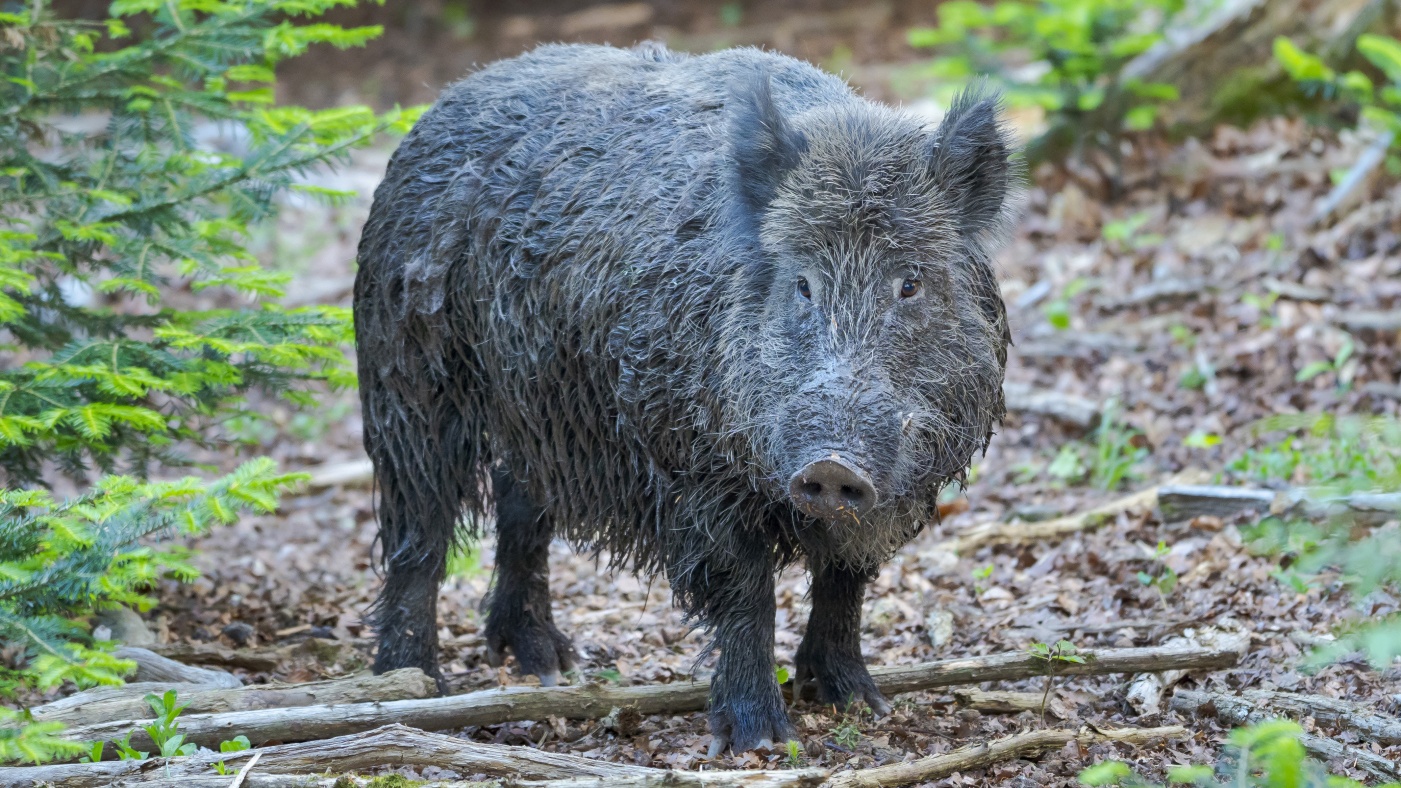Wild boars in Europe can’t shake off their radioactivity
Scientists think they may have solved a phenomenon known as the ‘wild boar paradox’

High levels of radioactivity have been found in Europe’s wild pigs for decades – and scientists believe they now know exactly how and why they came to be contaminated.
“Deranged packs of radioactive pigs” have been “wreaking havoc” in central Europe, said The Daily Beast. The high levels of caesium-137 found in wild boars in Bavaria, southeast Germany, have long been linked to the 1986 Chernobyl nuclear disaster.
Yet while radiation levels have decreased in other animals across Europe since then, experts have wondered why that decline did not occur in the pigs, a phenomenon that has become known as the “wild boar paradox”.
The Week
Escape your echo chamber. Get the facts behind the news, plus analysis from multiple perspectives.

Sign up for The Week's Free Newsletters
From our morning news briefing to a weekly Good News Newsletter, get the best of The Week delivered directly to your inbox.
From our morning news briefing to a weekly Good News Newsletter, get the best of The Week delivered directly to your inbox.
But according to a newly published study in the Environmental Science & Technology journal, the source of their contamination may be linked to atmospheric weapons testing that took place in the 1950s and 1960s.
The researchers used a “relatively new method of analysis” involving the ratio of two caesium isotopes to analyse the carcasses of boars killed by hunters across Bavaria from 2019 to 2021, explained The New York Times.
Nuclear reactors and nuclear weapons leave slightly different contamination signatures, “with distinct ratios of cesium-135 to cesium-137 isotopes”. So researchers could determine that the radiation present in the boars stemmed from nuclear testing conducted decades ago.
Georg Steinhauser, a radiochemist at the Vienna University of Technology and co-author of the study, explained that it was impossible to attribute the nuclear weapons fallout to any particular location or weapons test, as they affected the entire northern hemisphere evenly.
A free daily email with the biggest news stories of the day – and the best features from TheWeek.com
After a nuclear explosion “an enormous updraft occurs”, which pushes the radioactive material higher. When this falls back to Earth, the material has evenly distributed higher in the atmosphere to create a truly “global fallout” phenomenon, he told The Washington Post.
As for exactly why wild pigs are more radioactive than other animals, and how they came into contact with radioactive isotopes, the answer lies in their food. The boars are likely to have consumed caesium from contaminated deer truffle mushrooms, said Steinhauser.
Deer truffles, which sit some 20-40cm deep into the soil, appear to have absorbed all the caesium from nuclear weapons testing six decades ago. But caesium from the Chernobyl disaster is yet to reach the depths of the deer truffles, meaning radioactivity levels could increase even further.
Those who enjoy eating wild boar, however, shouldn’t be too concerned. Steinhauser said humans would have to eat “insane” amounts of boar to come into contact with meaningful amounts of radioactive material.
Sorcha Bradley is a writer at The Week and a regular on “The Week Unwrapped” podcast. She worked at The Week magazine for a year and a half before taking up her current role with the digital team, where she mostly covers UK current affairs and politics. Before joining The Week, Sorcha worked at slow-news start-up Tortoise Media. She has also written for Sky News, The Sunday Times, the London Evening Standard and Grazia magazine, among other publications. She has a master’s in newspaper journalism from City, University of London, where she specialised in political journalism.
-
 The ultimate films of 2025 by genre
The ultimate films of 2025 by genreThe Week Recommends From comedies to thrillers, documentaries to animations, 2025 featured some unforgettable film moments
-
 Political cartoons for January 3
Political cartoons for January 3Cartoons Saturday's political cartoons include citizen journalists, self-reflective AI, and Donald Trump's transparency
-
 Into the Woods: a ‘hypnotic’ production
Into the Woods: a ‘hypnotic’ productionThe Week Recommends Jordan Fein’s revival of the much-loved Stephen Sondheim musical is ‘sharp, propulsive and often very funny’
-
 The science behind nuclear weapons
The science behind nuclear weaponsSpeed Read What makes them so deadly?
-
 Radioactive waste found at elementary school near World War II nuclear facility
Radioactive waste found at elementary school near World War II nuclear facilitySpeed Read
-
 Is Russia tampering with nuclear radiation sensors?
Is Russia tampering with nuclear radiation sensors?In Depth Two global detection facilities shut down in the wake of the nearby nuclear accident in early August, prompting allegations of a cover-up
-
 How likely is a nuclear war?
How likely is a nuclear war?In Depth UN disarmament director says risk of global conflict now highest since Second World War
-
 Nuclear weapons 'could be used to deflect asteroids'
Nuclear weapons 'could be used to deflect asteroids'Speed Read Russian scientists argue 1967 space ban may have to be lifted if the Earth is at risk from a major collision